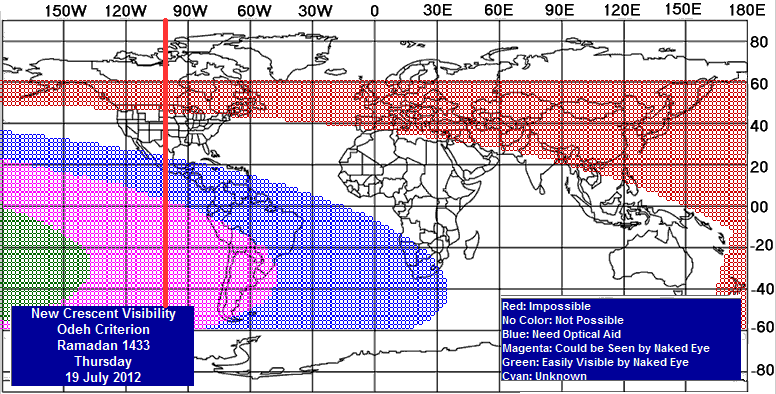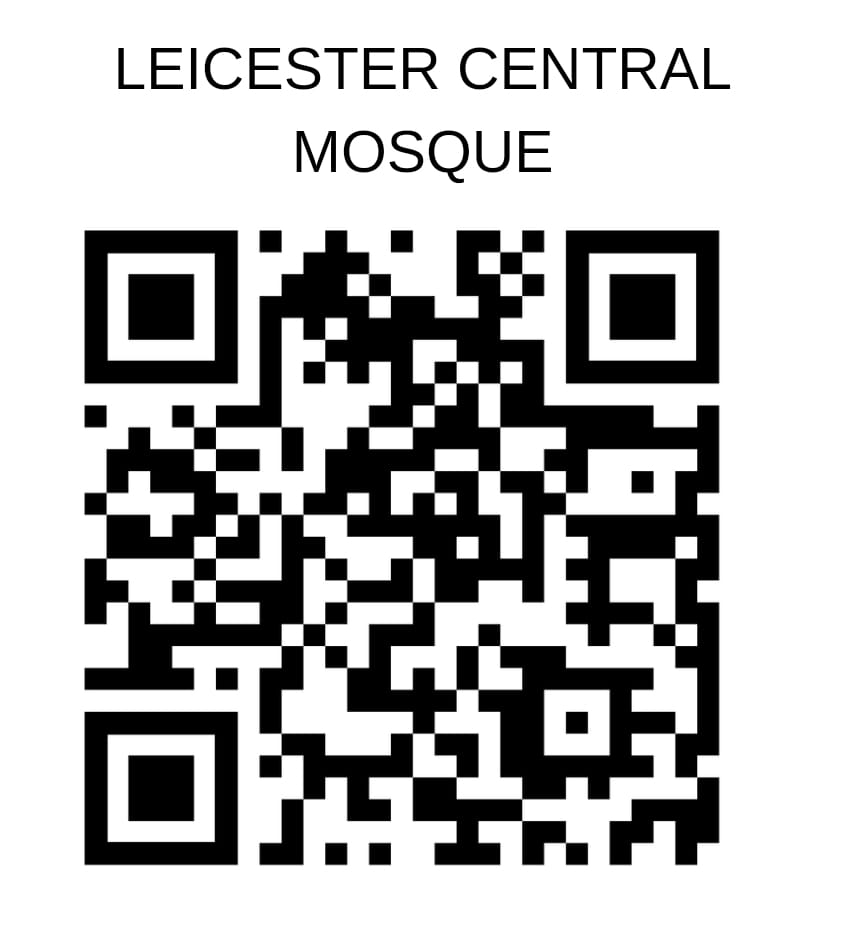The Bid’a (Innovation) of the Saudi Calendar
The Bid’a (Innovation) of the Saudi Umm al-Qura Calendar
Introduction
The Umm al-Qura calendar is the official lunar calendar system of Saudi Arabia and is used in the Middle East and by many Muslims across the world to establish the start of the Islamic month. Contrary to popular belief, the Umm al-Qura calendar system is not established on actual moon sighting but the certainty that the moon will be seen somewhere in the world within a given period. This pre-calculated and fixed calendar system is a Bid’a (innovation) that cannot be supported by the Quran or Sunna.
Those to advocate the Umm al-Qura calendar system and the utilisation of a fixed ‘calculated’ calendar present the calculation of prayer times using science as justification. This article explores the flaws of the Umm al-Qura calendar and the weak case of using prayer time calculations as justification for a fixed pre-calculated Islamic Calendar.
Astronomy and the Holy Quran
The Quran clearly indicates that the sun, moon and the stars have been set on fixed orbits:
“And He has made the sun and the moon, constant in their courses, to be of service to you, and He has made the night and the day (to be of service to you)” (14:33)
“And He it is Who created the night and the day, and the sun and the moon. They float, each in an orbit” (21:33)
” It is not for the sun to overtake the moon, nor does the night outstrip the day. They all float, each in an orbit” (36:40)
It is this foundation on which astronomy is based and has allowed Muslims from the birth of Islam to use science to establish prayer times and measure the passing of the months.
The advances made by Islamic astronomers throughout history are well documented, with many instruments still used today being the invention of Islamic astronomers. A significant number of stars in the sky, such as Aldebaran and Altair, and astronomical terms such as alhidade, azimuth, and almucantar, are still referred to by their Arabic names.
Using Calculations for Prayer Times
In describing the times of the five daily prayers, our Prophet (peace be upon him) used terminology and methods which were understandable, visible and accessible for all; the movement of the sun and the shadow it casts.
Today a multitude of devices and methods are utilised in establishing the five daily prayers, where science and the astronomical principles outlined in the Holy Quran allow us to calculate the prayers times to the millisecond. In today’s world they may be very few Muslims who measure the length of shadows and track the position of the sun when establishing prayer times.
Those who advocate the use of calculations for establishing the Islamic Calendar present the way in which prayer times are established in the modern world as justification. Unfortunately this is a flawed argument; just because people don’t track the sun does not mean that modern methods prevent us from doing so.
Let us take Zuhr as an example. Zuhr begins after midday when the sun has passed the meridian; the point at which the shadow caste by an object has been at it’s shortest (Zawal) and has begun to grow again. Zuhr to you and I may be a time printed on our local Mosque prayer timetable calculated using an astronomical formula but if you were track the shadow of an object you would find the calculated time matches the physical observation you can make by watching the shadow cast by the sun. The method may have changed but the Hadith is still fulfilled. This is the beauty of Islam; it is a progressive religion where its principles are universal and timeless.
Unfortunately the same can not be said for the fixed pre-calculated Umm al-Qura calendar of Saudi Arabia.
Starting an Islamic Month
Many sayings of our Prophet (peace be upon him) exist on how to establish a new Islamic month. One of the most famous and widely accepted Hadith reported by Ibn Umar (may Allah be pleased with him) and narrated by Imam Muslim in his Sahih states that our Prophet (peace be upon him) said:
"The month is twenty nine days. So do not fast until you see the crescent of the moon and do not stop fasting until you see it. Thus if it is cloudy upon you, then complete the period of thirty days.”
The widely accepted interpretation of this Hadith is that a new Islamic month begins when the moon is sighted with the naked eye. This is an actual observation and is not based on an assumption or calculation of the moon’s position. The requirement of a physical observation is further supported in the hadith when our Prophet (peace be upon him) states “Thus if it is cloudy upon you, then complete the period of thirty days”. Cloud would only impair a physical observation and so our Prophet (peace be upon him) was not speaking about a calculation or predictive position of the moon.
Umm al-Qura Calendar System
The Umm al-Qura calendar allows for the new Islamic month to be announced in Mecca at sunset based on the calculated ‘certainty’ that before dawn the following day in Mecca, someone in countries west of Mecca will see the moon. The announcement of the new Islamic month is not dependant on the actual receipt of this moon sighting confirmation. This principle of moon sighting is not based on ‘actual’ moon sighting but on the ‘certainty’ (calculation) the moon will be seen somewhere by Muslims many hours after sunset in Saudi Arabia.
Ramadhan 1433 AH (2012) was announced by Saudi Arabia for Friday 20th July despite the moon being impossible to seen in the Kingdom at sunset. This announcement was based on the calculation that the moon would be of a sufficient age to be seen by the naked eye on the west coast of South America.
The astronomical principles outlined in the Quran are used in modern technology to generate world moon sighting maps. Astronomical calculations are applied to every point on the earth to establish the position and age of the moon when the sun sets in a given location. These maps allow us to focus on areas of the world where the moon could be seen and more importantly establish were the moon will be impossible to be seen.
The moon sighting world map shown below clearly illustrates that it was impossible to see the moon in Saudi Arabia and in much of the world on Thursday 19th July 2012:
So if it was not possible to see the moon in Saudi Arabia on Thursday evening then how did the Saudi Arabian government announce the start of Ramadhan for Friday 20th July? The Umm al-Qura calendar system allows the announcement of the start of the Islamic month based on the ‘certainty’ the moon will be been somewhere in the world before the following day begins in Mecca. Saudi Arabia began Ramadhan on the basis that Chile on the west coast of South America could see the moon before dawn in Mecca; represented by the red line on the map.
Advocates of the Umm al-Qura Calendar argue they are using the same scientific principle used to establish prayers times and they would not be wrong in this argument. There is one important distinction to be made which renders this argument mute; a calculated prayer time is supported by observation, the future visibility of the moon can not be supported by observation. Ramadhan 1433 AH (2012) was announced by Saudi Arabia for Friday 20th July 2012 on the basis that Muslims in Chile would see the moon. According the all scientific data and subsequent observation reports, the moon was not visible anywhere else in the world. Independent reports and official announcements by Islamic organisations in Chile showed that the moon was not seen in Chile and the first official day of Ramadhan in Chile was Saturday 21st July 2012. The Umm al-Qura calendar had committed Muslims across the world to being Ramadhan on Friday 20th July when not a single Muslim in the world had seen the moon.
Islam is a timeless religion where the principles laid out in the Quran and Sunna can be applied for all time. How would Muslims of the past without the benefit of modern technology be able to predict that a Muslim half way across the world will see the moon? It is clear that this principle of a calculated calendar not based on actual moon sighting is a Bid’a (innovation).
Using Science
The use of science has clear benefits and can be applied to many aspects of Islamic life; prayer times are an excellent example of this. However science which can not be supported by the Quran or Hadith, however popular or widely promoted should not be used. Would a Muslim ever advocate Darwin’s theory of evolution as fact? When science is applied to prayer times, the convenience of modern time tables and mobile phone apps gives the same prayer times as the Muslim from 1400 years ago who watched the shadow of the sun. How would the Umm al-Qura calendar where future potential visibility of the moon have been implemented by Muslims 1400 years ago ? The role of science in establishing a calendar is to support the process of actual moon sighting; this is the only truly universal and timeless way Muslims can implement the Hadith of our Prophet (peace be upon him).
Unity
Unity does not equate to doing the same thing at the same time; those who present this argument only advocate dictatorship and control. Unity in the Muslim world will not come from starting Ramadhan or celebrating Eid on the same day across the entire planet. How can the whole world began Ramadhan on the same day when it is not even the same calendar day in every location on the earth? Unity comes from the members of the same family, Mosques in the same city, Muslims in the same country living in harmony and working for the common good.
Ironically the attempt by Saudi Arabia to unity the Muslim world at the start of Ramadhan 1433 had the opposite effect. If the Sunna of our Prophet (peace be upon him) had not been discarded for the Bid’a of the Umm al-Qura calendar system; the vast majority of the Muslim world would have begun Ramadhan on Saturday 21st July 2012.
Conclusion
Science should support Islamic life; Islam should not bend to meet science. Actual moon sighting is the practice of our Prophet (peace be upon him). Actual moon sighting was applied by the Muslims of the past and with modern technology and science can be carried out with greater accuracy and convenience today. Beginning the Islamic Month on the certainty someone many hours in the future may see the moon is a Bid’a (innovation); a practice impossible by Muslims of the past and the root of division and disharmony in today’s world.
May Allah give us all the ability to apply the fast knowledge given to us in the Quran correctly for the benefit of the entire Ummah. Ameen.



